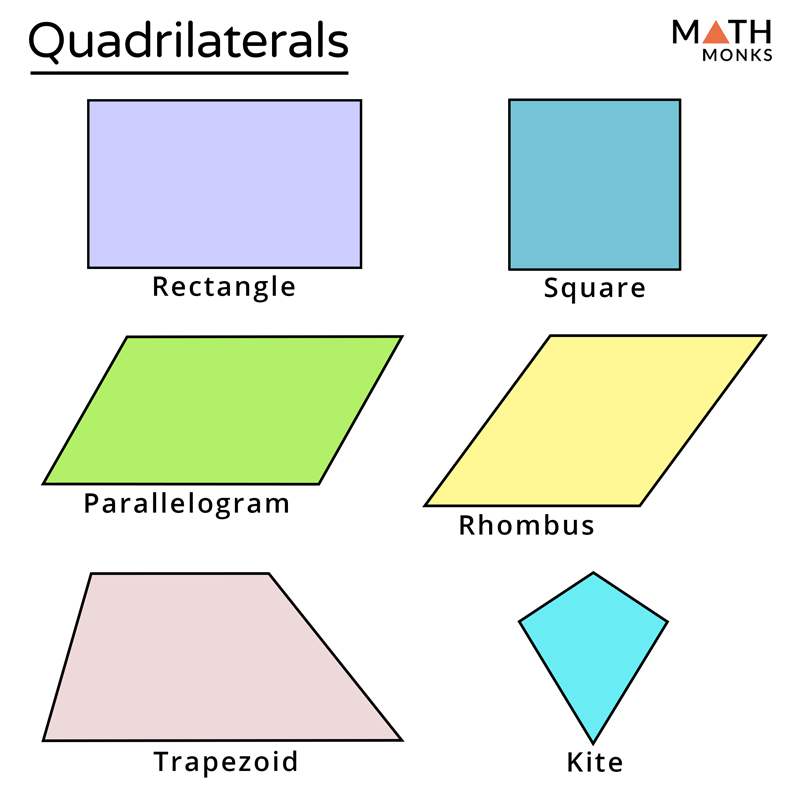
The complex quadrilateral has other names, too: butterfly, crossed quadrilateral, self-intersecting quadrilateral, or bow-tie. A simple quadrilateral will be symmetrical if it has at least one pair of congruent sides.
Irregular quadrilateral how to#
Quadrilateral example labeling How to name a quadrilateralĪ simple quadrilateral is also called a quadrangle or a tetragon. Each interior angle uses its vertex letter ( ∠A, ∠B, ∠C, ∠D).ĭiagonals can be constructed by connecting opposite (non-adjacent) vertices: AC and BD. Each side of the quadrilateral is then identified by its line segment ( AB, BC, CD, DA). Labeling your quadrilateralĮach vertex is given a letter, moving in either direction (clockwise or counterclockwise) to the next vertex, like quadrilateral ABCD.

Now draw a quadrilateral where two non-adjacent line segments cross each other. If two sides point inward, you drew a concave quadrilateral. Your simple quadrilateral could be either concave or convex. Do not let any line segments cross each other. Whether you have drawn a simple or complex, convex or concave quadrilateral, you did it correctly!ĭraw a simple quadrilateral. Draw four line segments so each endpoint touches one other endpoint. Use a straightedge or ruler to draw a quadrilateral. Quadrilateral shapesĪll the other four-sided plane figures derive from the quadrilateral: Quadrilaterals Names of quadrilaterals Two sides of the quadrilateral can cross each other -a complex quadrilateral - which makes your quadrilateral look like two adjoining triangles. When two or four sides are equal, you get special types of quadrilaterals such as trapezoids and rectangles. Sides and angles can be equal or unequal. How many sides does a quadrilateral have?Ī quadrilateral has 4 straight sides. Simple – The quadrilateral does not cross its sides (it is not self-intersecting).Ĭomplex – The quadrilateral has self-intersecting sides.Ĭonvex and concave quadrilaterals Properties of quadrilateralsĪ quadrilateral has two identifying properties:įour vertices (angles where sides meet at their endpoints) Quadrilaterals appear in four different classifications:Ĭonvex – Each interior angle is less than 180° and the two diagonals are inside the closed space of the quadrilateral.Ĭoncave – One interior angle is greater than 180° and one diagonal lies outside the shape. If you connect the four linear objects at their eight ends, you have a quadrilateral, a four-sided polygon. Find four straight objects to use as line segments (four = quad side = lateral). See our pages on circles and curved shapes for more.The easiest, fastest way to learn about quadrilaterals is to build one yourself. Any other polygon is an irregular polygon, which by definition has unequal length sides and unequal angles between sides.Ĭircles and shapes that include curves are not polygons - a polygon, by definition, is made up of straight lines. There are two main types of polygon - regular and irregular.Ī regular polygon has equal length sides with equal angles between each side. There are names for many different types of polygons, and usually the number of sides is more important than the name of the shape. The ‘poly-‘ prefix simply means ‘multiple’, so a polygon is a shape with multiple sides, in the same way that ‘polygamy’ means multiple spouses.

Isosceles – has two equal sides, with the third one a different length.Equilateral – all the sides are equal lengths, and all the internal angles are 60°.

There are several different types of triangle (see diagram), including: Three-Sided Polygons: TrianglesĪ three-sided polygon is a triangle. Polygons are usually defined by the number of sides that they have. The angles between the sides of the shape.When working with polygons the main properties which are important are:


 0 kommentar(er)
0 kommentar(er)
